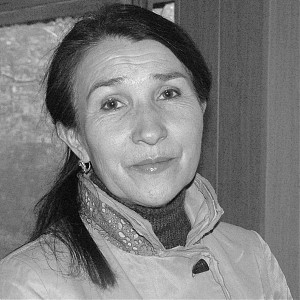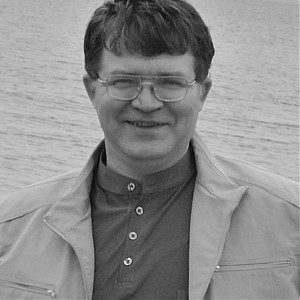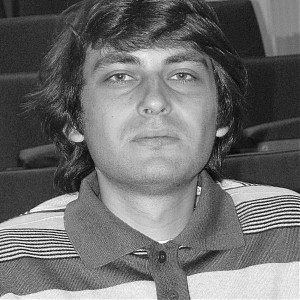Laboratory of Engineering Seismology and Seismogeology
Chief Vasilii I. Dzhurik, Dr. Sci. (Geol.-Min.)
The staff consists of 23 persons, among which are five doctors and eight candidates of sciences.
In 1963, Prof. A.A. Treskov, an organizer of instrumental seismic survey and a head of the Siberian seismological school, established the Laboratory of Seismology. In 1970, O.V. Pavlov, Dr. Sci. (Geol.-Min.), a coordinator of the integrated geological-geophysical investigations of seismic hazard of the BAM Railway and other industrial and civil objects in East Siberia and Mongolia, organized the Laboratory of Engineering Seismology. Before merging, the Laboratory of Seismology, the Laboratory of Physics of the Earth and the Laboratory of Engineering Seismology were headed respectively by V.M. Kochetkov, Can. Sci. (Geol.-Min.), A.V. Solonenko, Can. Sci. (Geol.-Min.), and V.A. Potapov, Dr. Sci. (Geol.-Min).
In 2011 Laboratory of Engineering Seismology was combined with Laboratory of Seismogeology. This Laboratory was organized in 1962 on the initiative of V.P. Solonenko, Corresponding Member of the Academy of Sciences of the USSR, after the occurrence of three large (Mondy, Muya and Middle Baikal) and one catastrophic (Gobi-Altai, South Mongolia) earthquakes in the region. In 1988-1997, the Laboratory was headed by V.S. Khromovskikh, Dr. Sci. (Geol.-Min.), and in 1997-2007 – by V.V. Ruzhich, Dr. Sci. (Geol.-Min.).
The Laboratory makes fundamental and applied studies into seismology including source seismology, seismic regime, quantitative seismic hazard assessment, variously detailed seismic zoning, dynamics of seismic waves in structurally inhomogeneous mediums, and prediction of seismic effects on soils and structures.
The most important results were obtained on the study of energy characteristics of a source and source stress fields, trends in seismic process development for the Mongolia-Baikal seismic belt, non-linear effects in the source and distant earthquake zones, fine spatio-temporal structure of wave fields in an inhomogeneous geological medium, and engineering seismics in cryolitic zone.
The applied studies areas of particular interest are development and adaptation of new methods of dynamic stability assessment and non-destructive control techniques for soils and structures, introduction of quasi-seismic events to engineering seismology, and prediction of seismic effects.
The Laboratory performs a large amount of work concerning engineering-seismological prediction of man-triggered effects on cryolitic zone that implies identifying the influence of deep-seated and near-surface inhomogeneities of the earth crust on the initial seismic signals and studying dynamics of seismic conditions of urban areas. Seismics of cryolitic zone provides a basis for the development of new research directions in geophysics related to elaborating methods to predict seismic effects in cryolitic zone and studying dynamics of seismic risk under global changes of temperature.
The methods have been elaborated to reconstruct large-earthquake signals from aftershocks. The prediction on strong-motion spectra at rock sites has been realized, and the studies are conducted with the source zones of large earthquakes including estimating their dynamic parameters and seismic hazard of the exploration areas in the Mongolia-Siberian region.
Main current lines of investigation:
- development and improvement of methods for quantitative assessment of seismic hazard for the Mongolia-Baikal region, Priamurye, Yakutia and other seismically hazardous areas including those inside and outside the former Soviet Union;
- improvement and further development of methods of paleoseismogeological studies, among them the development of probable scenarios for seismogenic catastrophes in the region;
- general and detail seismic zoning on the basis of new geological-geophysical considerations and preparation of the new maps for potential earthquake sources in the East Siberia within international and innovation projects;
- development of long-term and moderate-term prediction methods for Pribaikalye and adjacent areas;
- search for more effective methods providing seismic safety on the basis for the development of principally new ways of measuring and artificial regulating the stress-strain state of the geological medium in active fault zones.
Permanent cooperation is being conducted with the institutes RAS (Joint Institute of Earth Physics, International Institute of Earthquake Prediction Theory and Mathematical Geophysics, Geological Institute, Moscow), Siberian Branch RAS (Joint Institute of Geology, Geophysics and Mineralogy, Novosibirsk, Institute of Solar and Terrestrial Physics, Limnological Institute, Irkutsk, Yakutian Institute of Geology of Diamonds and Noble Metals), and numerous industry research centers, firms and institutions of higher education of Irkutsk (VostSibTISIZ, Irkutsk State University, Irkutsk State University of Railway Engineering). Scientific cooperation has been established with seismogeologists from USA, Japan, Germany, Mongolia, South Korea, and CIS countries (Kyrgyzstan, Uzbekistan, and Ukraine).
A favorable financing for the future and cooperation with leading specialists in theoretical physics, geomechanics, wave field theory and physical experiment may provide a successful solution of a number of problems in seismotectonic modeling of seismic process and destruction of the earth crust, moderate-term and long-term earthquake prediction, seismic hazard assessment, and effective measures for reducing earthquake damage.
The future development and improvement of research pursued in the Laboratory are related with multicomponent digital seismic station installations, basic principles of non-linear engineering seismology provided by the Laboratory, and approaches to the analysis of seismic process in the context of mutual-interaction events in structurally inhomogeneous crust of the Baikal rift zone.















